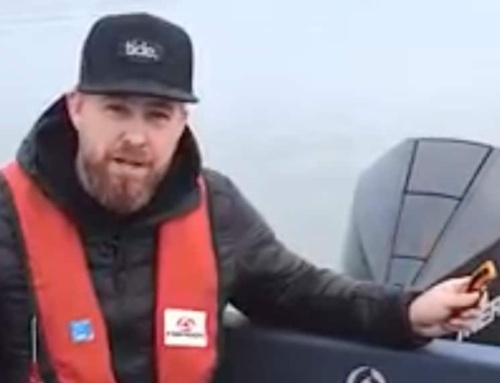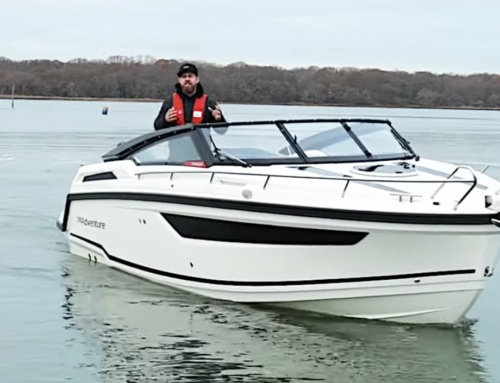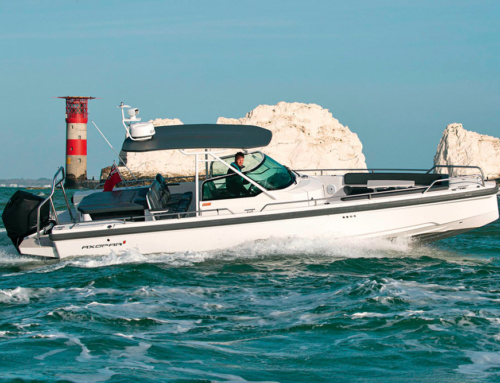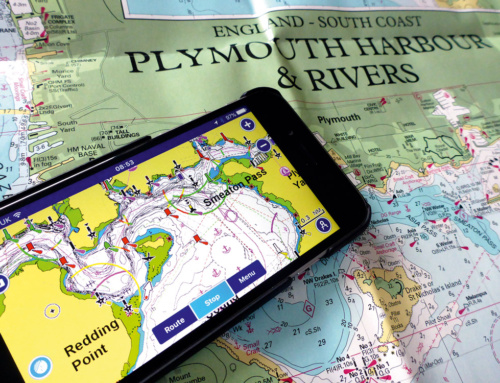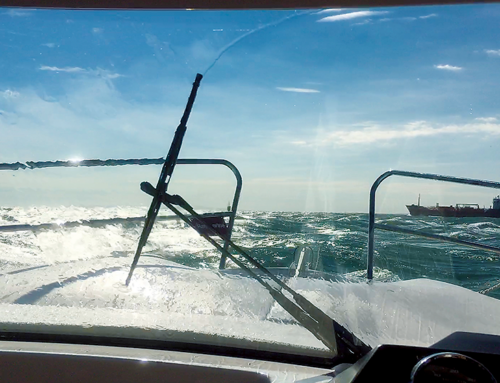Wearing seat belts and installing smoke alarms are among the many things we do to improve safety while hoping we never need to use them in anger. Preparing and practising for a ‘man overboard’ is no different, as Paul Glatzel explains …
Each year plenty of people fall out of boats. Most of the time recovery of the person in the water is easy – perhaps they swim to the boat, perhaps you throw them a line, perhaps they climb onto a pontoon. Such incidents are looked back on as part of our boating experience that helps us to get better and safer when afloat. But not all man overboard incidents end well – the weather conditions may make returning to the casualty tricky or recovery from the water a challenge. This is why responding and dealing with a man overboard forms such a key part of all RYA powerboat courses at all levels, and why the RYA has developed recommended actions when responding to an incident.
Like anything in life, knowing what to do and being able to do it when trouble strikes are two completely different things. The difference is usually practice, so in this article we’ll look at what to do and how to get better at returning to and recovering a casualty.
RYA powerboat courses teach methods to respond to a man overboard and return to them, but of course it is better not to suffer one in the first place. People get ejected from powerboats for various reasons, but it is safe to say that most of the time it’s the skipper’s fault. Passengers need to be seated with good handholds, driving needs to be adjusted for the conditions and seating arrangements need to be correct. For example, sharp turns with people seated on raised bench seats in RIBs with no sideways restraint risk rapid ejections from the side of the vessel. Overboard situations occur at slow speed too, so crew on deck working lines need good handholds and must keep their centre of gravity low if working forward. Don’t forget communication too – flooring the throttle while no one is holding on will have a pretty predictable outcome.
So what is the process for responding to a ‘man overboard’, or MOB? RYA courses teach a staged process. Assuming that the craft is proceeding ‘on the plane’, immediately an MOB is noticed several things need to happen almost at once. The skipper needs to steadily but positively reduce speed in a straight line. Avoid rapid or high-speed turns back towards the casualty as that risks more people going overboard. At the same time, shout ‘Man overboard!’ and get one person to point at the casualty. They should not stop pointing until the boat is alongside.
The RYA, RNLI and coastguard position is that at this stage it’s recommended to issue a distress call as almost without exception the MOB represents a ‘grave and imminent’ danger to life. It’s easy to think that you’ll sort the MOB with no issues and go straight to the recovery, but in my experience, when under pressure, unless a skipper is well practised and experienced, the adrenalin and worry that an MOB creates give rise to ‘variable’ boat-handling skills. Make the RNLI aware so they are heading to launch and can be stood down – this is much better than wasting 10 minutes failing to recover, then calling. Equally, getting early coastguard input may assist with medical issues such as shock, hypothermia and secondary drowning. Pressing the red DSC distress button then issuing a full Mayday message would be ideal. If not, the DSC button and a brief message – ‘Mayday vessel Tempest, dealing with MOB, stand by’ – will confirm the DSC call and, with the position from the DSC alert, the coastguard will task resources towards you.
Your job at this stage as skipper is to decide what the wind direction is as this is critical for the approach to the person in the water. The RYA teaches two directions of approach to a casualty in the water. Every year I am shown other approaches by skippers that will often work, but by using (and just as importantly, regularly practising) the two recommended methods you are keeping it simple and using methods that have been proven to work over years of practice and testing.
This method of approach suits craft with good access to the bow area. In rougher conditions the rise and fall of the bow can be dangerous and intimidating for the person in the water. A boathook and throw line should be available to increase ‘reach’ from the craft.
This method works for all powered craft and especially suits those where bow access is limited. A common question raised by people is whether it is dangerous to be side on to the wind/waves and whether the craft will be blown over the casualty. It is true that in breaking seas being beam on to the waves is highly dangerous, however in most windy conditions the waves are not actually breaking, so they pass beneath the vessel and are thus not overly dangerous. The method works well and gives a far larger target area, and is less intimidating for the person in the water.
Both methods are taught (or brushed up on) on all of the powerboat courses (Level 2, Intermediate and Advanced), but there is little point in just experiencing them there. The RNLI’s coxswains don’t become highly accomplished at recovering people by just doing a recovery from time to time; they practise repeatedly – and so must you! At the start of each season, spend an hour or two practising with your regular crew. Deploy a weighted fender or a half-full water bottle (never use a real person – it’s not worth the risk) and then practise the two approaches until they become straightforward. When you go out next and it’s a bit windier, try again as it’s important to keep practising in varying conditions to keep your skills up. Make sure too that you get the other members of your crew to practise with you not saying a word and pretending not to be there – after all, it could be you they are coming back for!
Getting the person alongside the craft is only half the battle, though, and you will need to develop a plan for getting an MOB back on board. On RIBs it’s pretty easy (relatively!) as the tubes are usually low and if needed you can deflate them to further reduce the freeboard. A person may be able to use parts of the engine as a step (engine off and kill cord out), and of course there may be a ladder that can be deployed from a swim platform at the stern. Whatever method is chosen, it’s worth being really clear about the plan and ensuring all on board know how it will work.
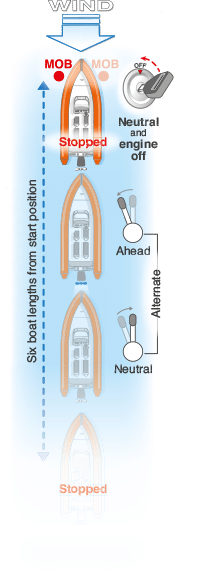
Don’t forget the need for some medical advice for the person that has been in the water. Even if you recover the person immediately, chat things through with the coastguard because if they have ingested water there could be life-threatening consequences over the following few days.
Hopefully you’ll never have to deal with an MOB from your craft or anyone else’s. If you do, though, the practice you put in following this article will certainly stand you in good stead. Have fun afloat!
Method 1 – into the wind
- Position your vessel about six boat lengths downwind and stop. Alternate between forward gear and neutral to progress slowly at minimum speed towards the casualty.
- One side of the boat may be preferable for the approach due to more space or a better view.
- With a slow approach, using reverse to reduce speed should never be necessary.
- At point of contact, neutral and engine off.
Method 2 – side on, drift down
- This method relies on the skipper positioning the craft two boat lengths directly upwind of the casualty and on keeping the craft at right angles to the wind.
- From this position the craft is then blown towards the casualty – forward and reverse may be necessary to ensure that the craft maintains the correct position. Again upon contact, neutral and engine off.
 Paul Glatzel is an RYA powerboat trainer and wrote the RYA Powerboat Handbook and the RYA Advanced Powerboat Handbook. He runs Powerboat Training UK in Poole and Lymington (www.powerboattraininguk.co.uk) and is a sea safety advisor for the RNLI.
Paul Glatzel is an RYA powerboat trainer and wrote the RYA Powerboat Handbook and the RYA Advanced Powerboat Handbook. He runs Powerboat Training UK in Poole and Lymington (www.powerboattraininguk.co.uk) and is a sea safety advisor for the RNLI.



